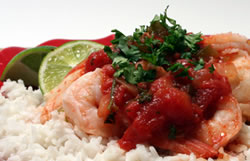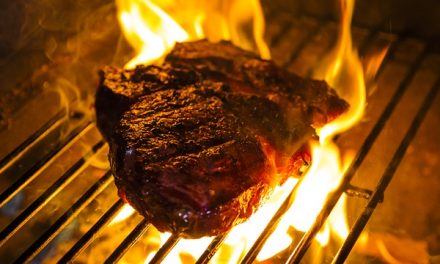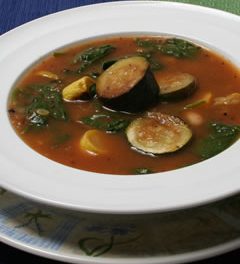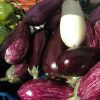According to The Farmer's Almanac, every full moon has a name. There is the harvest moon in October and the strawberry moon in June. In August, it will be the barley moon, a good reminder to serve this splendid grain more often than once in a blue moon. (A blue moon is the second moon in the occasional month when it appears full twice.)
Even if you appreciate the benefits of complex carbs, fiber and other nutrients, plus the filling satisfaction that whole grains bring to a meal, most likely you think of barley only when the weather turns cold. A bowl of earthy barley and mushroom soup or Scotch broth, the chunky soup made with beef broth or lamb, are perfect for driving out the chill of winter day.
A plant with very ancient roots, wild barley was the first grain to be cultivated. Tamed by agriculture, it became a scrappy, sturdy crop able to endure the harshest conditions of drought, cold, heat and poor soil. As a result, it has been grown from the Arctic to Ethiopia. In parts of China it was cultivated even before rice, perhaps as early as 2800 B.C.
Much of Europe relied on barley as a mainstay from ancient Greek times until the Renaissance. Only after other grains, particularly rice and wheat, were domesticated too, did eating barley fade, leaving only the people with no other choice, the poor, to rely on it as a staple while the rest looked down on it as food for peasants and cattle.
The health-conscious counter-culture of the 1970s, which revived eating like a peasant, included barley. Now, pearled barley, polished to remove the grain's exceptionally tough outer husk, is found in most supermarkets. It cooks in the same time as brown rice.
Because of its healthy, hippie and ethnic connotations, few people realize how versatile barley is. Simmer it in broth and serve it in place of rice. Or use water, then cool the barley to room temperature and turn it into a salad by adding chopped tomato, corn kernels, green pepper, and bottled Italian salad dressing. I also use it to make this vegetable-studded stir-fry.
Barley Stir-Fry
Makes 4 servings.
Ingredients
- 1/2 cup pearl barley
- 2 tsp. canola oil
- 1 medium red onion, diced
- 1 red bell pepper, seeded and diced
- 2 ounces fresh shiitake mushrooms, stemmed and chopped
- 8 snow peas, cut lengthwise into thin strips
- 2 scallions, green and white parts, chopped
- 1/2-1 1/2 tsp. grated peeled ginger, according to taste
- 1/2 cup orange juice
- 1 Tbsp. reduced-sodium soy sauce or teriyaki sauce
- Salt and freshly ground black pepper, to taste
Directions
- Bring 2 cups water to boil in deep saucepan. Add barley. When liquid returns to boil, reduce heat, cover, and simmer 30 to 40 minutes, or until barley is almost tender. Makes 2 cups cooked barley.
- Heat the oil in a medium, non-stick skillet over high heat. Stir-fry onion and red pepper 1 minute. Add mushrooms and stir-fry until they look moist, about 1 minute. Add snow peas, scallions, ginger, and stir-fry 15 seconds.
- Add cooked barley, orange juice, teriyaki sauce, and salt and pepper to taste, if desired. Cook until barley is heated through. Serve immediately.
Nutritional Information Per Serving:
158 calories,
3 g. total fat (0 g. saturated fat),
30 g. carbohydrate,
4 g. protein,
6 g. dietary fiber,
161 mg. sodium
0
AICR








